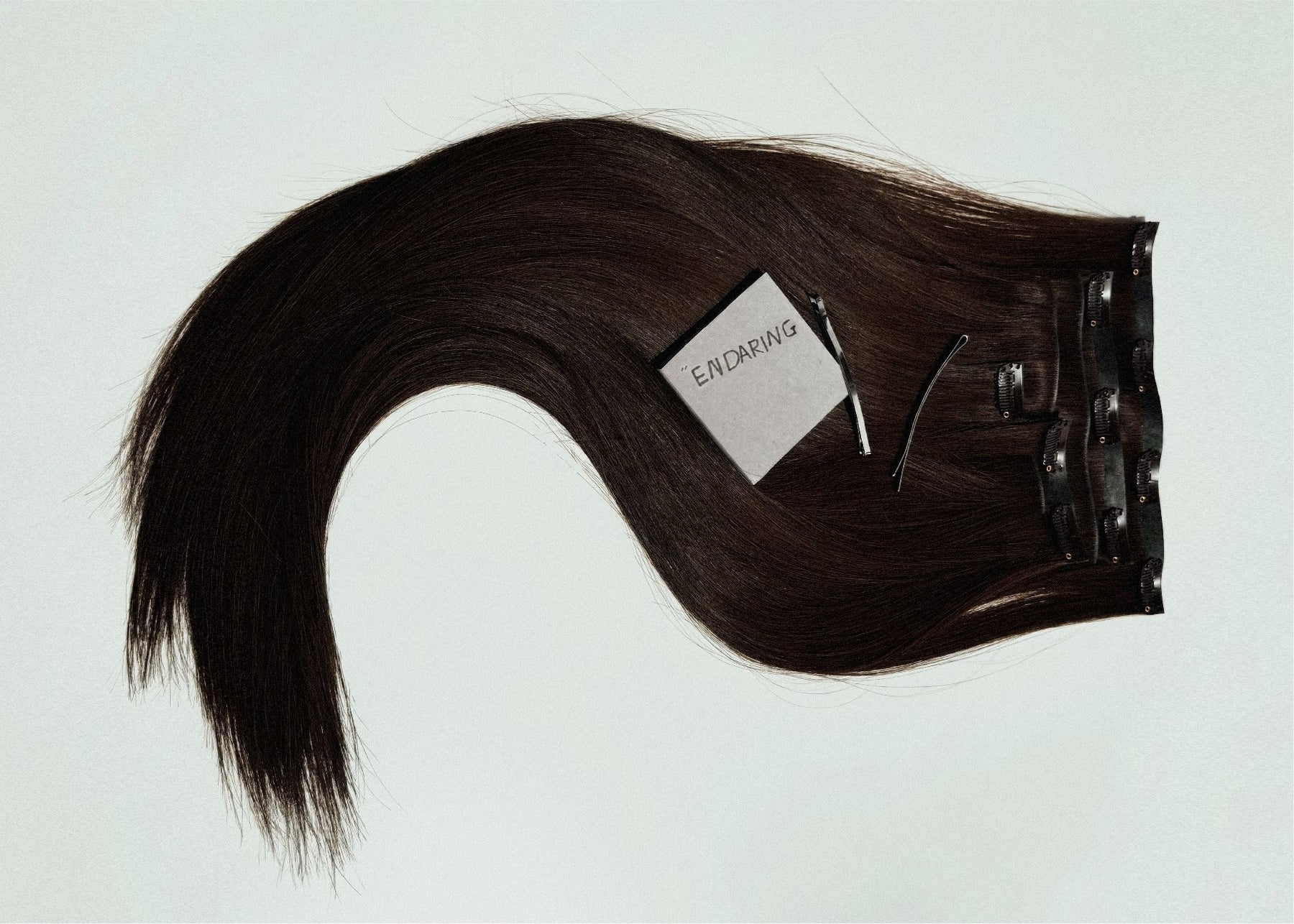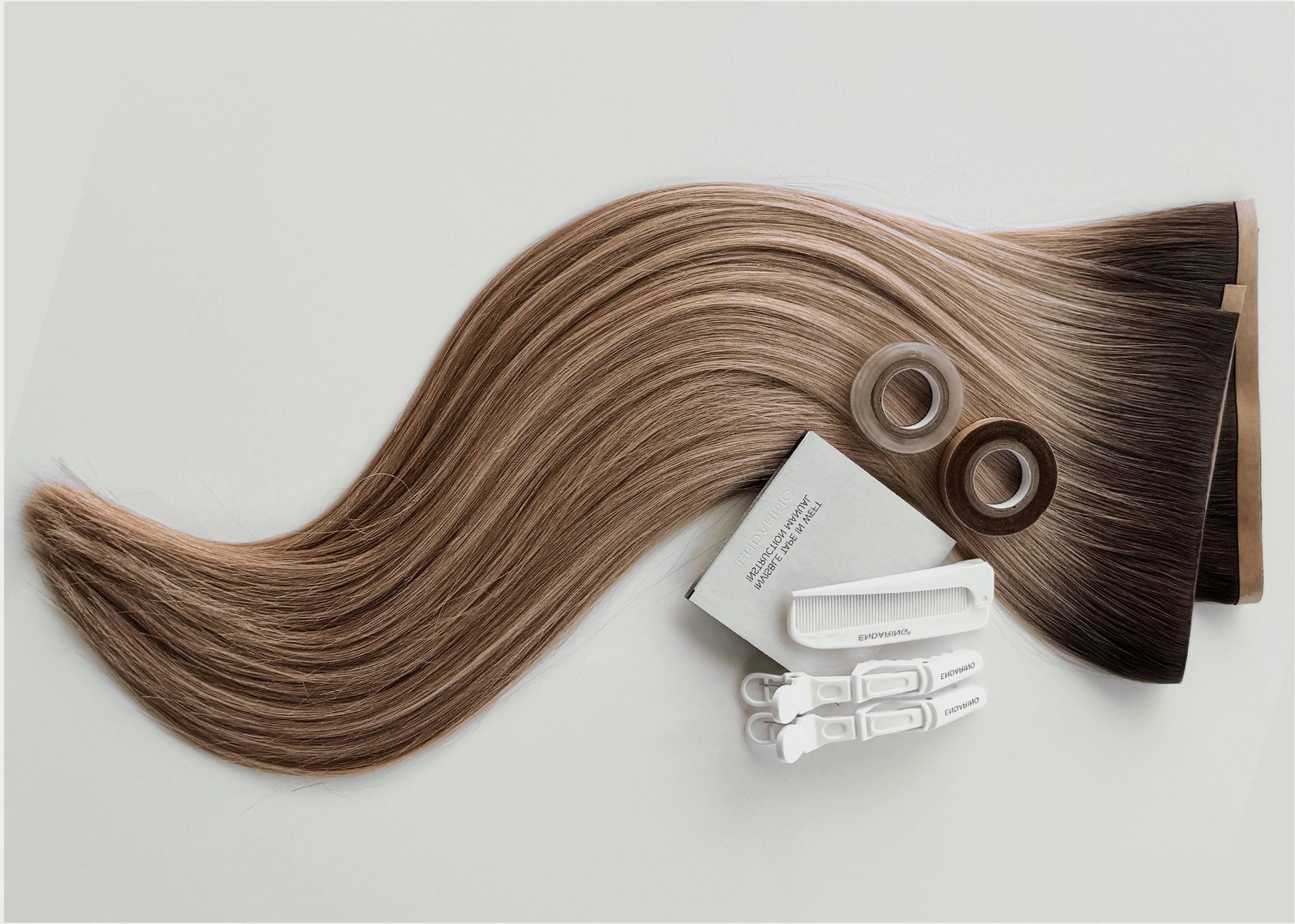We all cherish our locks, and it's only natural to wonder: How much hair loss is normal? If you've found yourself pondering this question, you're not alone. Whether you're running your fingers through your mane or staring at the strands in your brush, the curiosity is universal.
1. Understanding Hair Growth Cycles:
Hair growth isn't a constant process; it happens in cycles. Each hair strand on your head goes through phases of growth, rest, and shedding. This cycle is influenced by factors like genetics, hormones, and age. Understanding this natural process is crucial to discerning what's normal in terms of hair loss. The growth cycle helps explain why shedding occurs and why occasional hair loss is part of the natural rhythm.
A. Anagen Phase (Growth):
This is the active growth phase where your hair follicles are producing new cells, and your hair is steadily increasing in length.
The duration of the anagen phase varies from person to person, influenced by factors such as genetics and age.
Generally, scalp hair remains in this phase for 2 to 7 years, determining the potential length your hair can reach.
B. Catagen Phase (Rest):
Following the anagen phase, your hair enters a transitional stage known as catagen.
This is a brief period lasting about 2 to 3 weeks when the hair follicle shrinks and detaches from the blood supply.
Hair growth stops during catagen, and the hair becomes a club hair, preparing for the next phase.
C. Telogen Phase (Shedding):
The telogen phase is the resting phase, where the club hair is fully formed but not yet shed.
Lasting around 3 months, this phase sees the old hair resting while a new hair begins the anagen phase.
Shedding occurs when the new hair pushes the old hair out, marking the end of the telogen phase.

2. Daily Hair Loss: What's Considered Typical?
Normal Daily Hair Loss:
On an average day, it's entirely normal to lose a certain amount of hair. This falls within the range of 50 to 100 hairs daily. This might sound like a lot, but considering the vast number of hair follicles on your scalp (approximately 100,000), it's just a small fraction of your total hair. Recognizing this baseline shedding is crucial for maintaining a realistic perspective on hair health.
Life Cycle Completion:
When you notice a few strands on your brush or in the shower, it's likely the result of hairs that have completed their life cycle. These hairs have reached the end of the telogen phase, where they are ready to be shed to make room for new growth. It's a natural and ongoing process that allows your hair to renew itself continually.
Put Your Mind at Ease:
Acknowledging this daily shedding is a crucial step in maintaining peace of mind. It's common for people to worry when they see hair in their brush or on the bathroom floor.
When to Be Alert:
While shedding a certain amount of hair daily is normal, it's essential to be attentive to changes. If you notice a sudden increase in hair loss or significant changes in the texture or density of your hair, it might be worth investigating further. Factors such as stress, hormonal imbalances, or nutritional deficiencies can contribute to abnormal hair loss, and addressing these issues can help maintain a healthy hair balance.
3. The Role of Genetics in Hair Shedding:
Genetics plays a significant role in determining the thickness and density of your hair. Understanding your family history can offer insights into what's considered normal for you. If hair loss patterns, especially during specific life stages, run in the family, it can provide a context for your own experiences. This doesn't mean you're destined to follow the same path, but it can help you anticipate potential patterns.
4. Seasonal Influences on Hair Loss Patterns:
Many people experience a bit more shedding during certain times of the year, particularly in the fall and spring. This phenomenon, often referred to as seasonal hair shedding, is a natural response to changes in the environment.
A. Fall and Spring as Peak Shedding Times:
- Fall and spring are often identified as peak shedding times due to distinct environmental shifts.

- In the fall, the decrease in sunlight exposure and temperature changes can trigger more hair to enter the telogen (shedding) phase.
- During spring, the body may respond to increased daylight and temperature, leading to a similar shedding response.
B. Seasonal Hair Shedding as a Natural Response:
- Seasonal hair shedding is considered a natural response to environmental changes.
- It's a mechanism where the body adjusts hair growth cycles in response to external factors.
- This adaptation might be evolutionarily rooted, with hair shedding more in seasons when extra insulation isn't as necessary.
C. Temporary Nature of Seasonal Shedding:
- It's crucial to emphasize that seasonal shedding is temporary and usually self-corrects.
- The hairs shed during this period are making way for new growth, ensuring that your hair remains adaptive to seasonal changes.
D. Seasonal Hair Care Adjustments:
- While seasonal shedding is a natural occurrence, individuals can make minor adjustments to their hair care routine during peak shedding times.
- This might involve using a gentler touch during styling, opting for protective hairstyles, or incorporating nourishing treatments to support overall hair health.
- These adjustments are more about maintaining the health of existing hair rather than preventing shedding, as shedding is a natural and necessary part of the hair growth cycle.
5. Postpartum Shedding: A Temporary Phase
For new moms, postpartum shedding is a common but temporary phase. During pregnancy, elevated hormone levels can prolong the growth phase of hair, resulting in thicker locks. However, after giving birth, hormones return to normal levels, and delayed shedding occurs. It's essential to recognize this temporary postpartum shedding and avoid unnecessary stress during this period of adjustment.

Certainly, let's delve into the specifics of postpartum shedding with detailed points:
-
Hormonal Changes during Pregnancy:
- Estrogen Dominance: Elevated levels of estrogen during pregnancy contribute to a state of estrogen dominance. This hormonal environment promotes the prolonged growth phase (anagen) of hair follicles.
- Prolonged Growth Phase and Thicker Locks:
- Extended Anagen Phase: The elevated estrogen levels extend the anagen phase, during which hair actively grows. This results in fuller, thicker locks for many pregnant women.
- Temporary Nature: It's important to note that this enhancement of hair thickness is temporary and directly tied to the hormonal conditions of pregnancy.
- Return to Normal Hormone Levels Postpartum:
- Hormonal Adjustment Post-Delivery: After childbirth, hormonal levels, particularly estrogen, gradually return to their pre-pregnancy state.
- Transition to Telogen Phase: The shift to normal hormone levels signals the transition from the extended anagen phase to the telogen (shedding) phase, leading to postpartum shedding.
- Understanding Postpartum Shedding:
- Common and Expected: Postpartum shedding is a common and expected occurrence for many new moms.
- Delayed Shedding Explanation: The delay in shedding during pregnancy means that more hairs enter the telogen phase postpartum, resulting in a noticeable increase in hair loss.
- Temporary Nature of Postpartum Shedding:
- Duration: Postpartum shedding typically occurs in the months following childbirth and lasts for a relatively short period.
- Self-Resolution: In most cases, postpartum shedding resolves on its own as the body adjusts to the post-delivery hormonal changes.
- Reassurance for Moms: Understanding the temporary nature of this phase is reassuring for new moms facing changes in their hair texture and density.
- Avoiding Unnecessary Stress:
- Normalcy Emphasis: Emphasizing that postpartum shedding is a normal and temporary phase is crucial for preventing unnecessary stress.
- Common Concern: It's common for new moms to experience stress or anxiety when they notice increased hair loss after giving birth. Acknowledging the naturalness of this process helps ease concerns.
- Hair Care Tips during Postpartum Shedding:
- Gentle Hair Care: Recommending gentle hair care practices during postpartum shedding, including avoiding excessive styling or harsh treatments.
- Scalp Nourishment: Encouraging nourishment of the scalp through a balanced diet, adequate hydration, and potentially supplements if advised by a healthcare professional.
In essence, postpartum shedding is intricately linked to hormonal changes during and after pregnancy. Understanding the hormonal dynamics, the temporary nature of the shedding phase, and offering practical tips for hair care empower new moms to navigate this post-delivery period with confidence and self-care.
6. Stress and Hair Loss: Unraveling the Connection
Stress is a known contributor to hair loss. Whether it's due to emotional stress, physical stress, or an underlying health issue triggered by stress, it can impact the hair growth cycle.

Certainly, let's dive into the specifics of the connection between stress and hair loss:
-
Types of Stress:
- Emotional Stress: Stress from emotional factors, such as anxiety, grief, or chronic worry, can contribute to hair loss.
- Physical Stress: Physical stressors like illness, surgery, or trauma can trigger a response that impacts the hair growth cycle.
- Impact on the Hair Growth Cycle:
- Telogen Effluvium: Stress can induce a condition known as telogen effluvium, where a significant number of hair follicles enter the resting (telogen) phase simultaneously.
- Premature Shedding: This synchronized entry into the telogen phase results in increased shedding, leading to noticeable hair loss.
- Chronic Stress and Hormonal Changes:
- Cortisol Release: Chronic stress prompts the release of cortisol, known as the stress hormone.
- Hormonal Imbalance: Elevated cortisol levels can disrupt hormonal balance, affecting the normal functioning of hair follicles and the hair growth cycle.
- Understanding the Connection:
- Hair Follicle Sensitivity: Hair follicles are sensitive to hormonal changes, and stress-induced hormonal fluctuations can impact their activity.
- Shift in Growth Phases: Stress may lead to a shift in the balance of hair growth phases, causing more hairs to enter the telogen phase prematurely.
- Stress Management Techniques:
- Relaxation Techniques: Incorporating relaxation techniques, such as deep breathing, meditation, or yoga, helps reduce overall stress levels.
- Self-Care Practices: Engaging in self-care practices, including sufficient sleep, regular exercise, and maintaining a healthy lifestyle, contributes to stress reduction.
- Seeking Professional Support:
- Professional Guidance: Recognizing the severity of stress-induced hair loss and seeking professional support is crucial.
- Dermatologist or Healthcare Provider: A dermatologist or healthcare provider can assess the specific situation, offer personalized recommendations, and rule out underlying health issues contributing to hair loss.
7. Balancing Act: Hormones and Hair Shedding
Hormones play a pivotal role in hair growth and shedding. Fluctuations in hormone levels, whether due to puberty, pregnancy, or menopause, can influence the hair growth cycle. Understanding this hormonal balance and its impact on hair shedding provides individuals with insights into what changes are considered normal during different life stages. It also emphasizes the importance of hormone-related considerations in managing and maintaining healthy hair.
Certainly, let's explore the specifics of the balancing act between hormones and hair shedding:
-
Hormonal Influence on Hair Growth:
Puberty, Pregnancy, Menopause: Hormonal fluctuations during key life stages, such as puberty, pregnancy, and menopause, significantly impact the hair growth cycle.
Androgens (Testosterone): Androgens, including testosterone, influence the duration of the hair growth phases, particularly affecting the anagen (growth) phase.
- Puberty and Hormonal Surges:
Increased Androgens: Puberty is marked by an increase in androgens, contributing to changes in hair texture and growth patterns.
Potential Oiliness: Elevated androgens can lead to increased oil production in the scalp, influencing hair health.
- Menopause and Hormonal Decline:
Estrogen Decline: Menopause involves a decline in estrogen levels, impacting the hair growth cycle.
Thinning and Texture Changes: Hair may become thinner, and texture changes are common due to reduced estrogen's effects on follicle activity.
8. Nutrition for Healthy Hair: Impact on Shedding
Your diet plays a significant role in the health of your hair. Nutrient deficiencies can contribute to hair loss, and maintaining a balanced diet is essential for healthy hair growth. Nutrients like vitamins A, E, and D and iron and proteins support the hair follicles. Exploring the impact of nutrition on shedding helps individuals make informed choices about their dietary habits to promote optimal hair health.
9. Effective Hair Care Practices to Minimize Loss
The way you care for your hair matters. Overuse of heat styling tools, tight hairstyles, and harsh chemicals can contribute to hair damage and loss. Exploring effective hair care practices involves discussing gentle washing routines, suitable hair products, and protective styling methods. Providing practical tips empowers individuals to adopt habits that minimize unnecessary stress on their hair, promoting overall hair health.
10. When to Seek Professional Advice on Hair Loss:
While a certain amount of hair loss is normal, sudden or excessive shedding may signal an underlying issue. Recognizing when to seek professional advice is crucial for timely intervention. Factors like hormonal imbalances, medical conditions, or nutritional deficiencies can contribute to abnormal hair loss. Discussing the signs that warrant a visit to a healthcare or hair care professional ensures individuals take proactive steps when needed.





